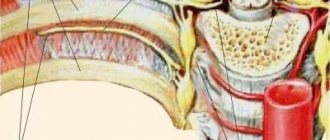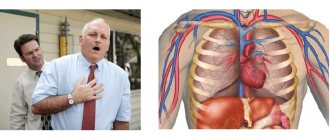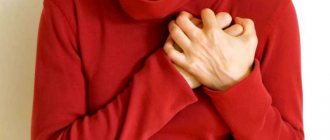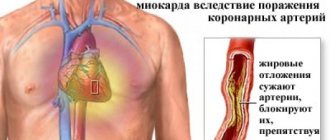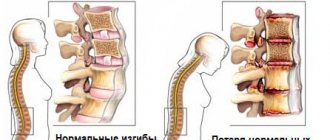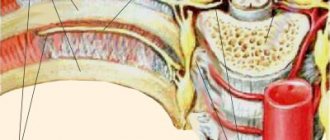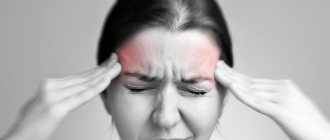Heart reasons
The main cause of pain in the chest with radiation to the left arm is considered to be a violation of the blood supply to the myocardium due to damage to the coronary arteries of the heart. This pathological condition is called coronary heart disease (CHD). The leading pathophysiological mechanism is the discrepancy between the need of the heart muscle for oxygen and the ability to satisfy this need by the coronary blood flow.
The development of the disease is facilitated by the formation of atherosclerotic plaques on the walls of blood vessels. Severe narrowing of the lumen of the coronary arteries (stenosis) leads to the development of angina pectoris. A well-collected anamnesis allows you to differentiate it from other sensations in the chest area.
Myocardial infarction
Accompanied by necrosis of a section of the heart muscle due to complete or partial insufficiency of blood supply. One of the main signs of myocardial infarction (MI), its precursor is severe chest pain lasting more than 30 minutes, which is not relieved by repeated administration of nitroglycerin.
Characteristic symptoms:
- discomfort in the sternum;
- increasing pressing, burning, bursting pain behind the sternum with rapid achievement of maximum intensity;
- extensive irradiation of sensations.
The pain may spread to the left side of the body, including the left arm. It proceeds in waves, periodically decreasing, but not stopping completely. It radiates to the neck, under the shoulder blade and lower jaw, and is felt in the epigastric region. Some patients describe their sensations with the term “dagger pain,” meaning not its nature, but its intensity.
Heart pain accompanies anxiety. Patients often report a feeling of fear of death. They are restless and put their hand to their chest. In this case, pale skin, cold sticky sweat, and rapid heartbeat (tachycardia) are observed. Swelling, shortness of breath, and nonproductive cough may occur.
Angina pectoris
The most common variant of IHD. Can be stable or unstable. The latter is considered a severe period of exacerbation of coronary artery disease and threatens the development of myocardial infarction.
Main features:
- intense paroxysmal pain, pressing, squeezing nature;
- irradiation into the left arm (elbow, shoulder), under the left shoulder blade, into the jaw;
- The duration of the attack is 1-10 minutes.
Patients complain of a burning sensation in the chest. Unpleasant sensations are quickly relieved by taking medications or stopping the exercise. Equivalents of angina include a feeling of lack of air, a “lump” in the throat, and paroxysmal shortness of breath. In some patients, not only does the heart tighten, but also the heart rate increases and perspiration appears.
Less Likely Causes
Other cardiac causes of chest pain include myocarditis and pericarditis.
Myocarditis is often caused by infection. The clinical picture depends on many reasons. An atypical variant of the course, pseudocoronary, is considered difficult to diagnose and treat. Patients complain of intense pressing-burning pain in the heart area, weakness, and shortness of breath. The pain syndrome resembles the picture of angina pectoris or myocardial infarction. In some cases, mild joint discomfort may occur.
Pericarditis is an inflammatory disease of the heart lining. The pericardium has good innervation, so its inflammation often causes severe pain. By nature she is dull and oppressive. The heart hurts more often with dry pericarditis. The pain may worsen when lying down, taking a deep breath, or coughing. Irradiation to the neck and shoulder girdle on the left is rarely observed. Sometimes there is a feeling of fear, a feeling of a sinking heart and lack of air.
Osteoarthritis
As a person ages, osteoarthritis may develop. Shoulder pain from this degenerative joint disease may be the result of general wear and tear, a long-standing injury, or repetitive motion due to exercise or sports. Cartilage and joint tissue break down over time, increasing friction and causing pain, swelling and decreased mobility. According to experts, every third person over 60 years of age suffers from osteoarthritis. This disease is treatable.
There are many treatments that can help increase joint mobility and reduce pain. Conservative, noninvasive options include ultrasound, cold laser, physical therapy, and strengthening exercises. To reduce pain, patients may consider cortisone injections, new and experimental treatments such as PRP (platelet-rich plasma) or stem cells, and joint replacement surgery.
Electronic visas will appear in Russia: travelers will be able to enter without papers
How to make your own baby towels with a hood: it turns out very cute
Serious problem: Mercedes is being sued for breaking panoramic windows
Extracardiac causes
In many cases, the cause of pain and tightness in the chest are conditions that are not associated with pathology of the cardiovascular system, in particular musculoskeletal dysfunction.
From a neurological point of view, discomfort in the cardiac region in adults can be divided into vertebrogenic and non-vertebrogenic pain syndromes.
Vertebrogenic
These include pain phenomena due to degenerative-dystrophic changes in the spine (pathology of the facet or costotransverse joints, spondylolisthesis).
Musculoskeletal causes of cardialgia include myofascial pain syndromes. Common sources of shooting pain in the anterior chest wall are the pectoral, scalene and subclavian muscles. Local tension of the pectoralis major muscle is manifested by soreness, which can radiate to the medial parts of the shoulder and forearm. Symptoms characteristic of ischemic heart disease develop. They appear when lifting heavy objects, especially in front of you or with your arms outstretched.
Throwing back the arm or sharply abducting the shoulder leads to injury to the pectoralis minor muscle. Pain appears at the level of the 3-4 ribs, often radiating to the ulna. It is similar in nature to angina pain. Accompanied by sensitivity disorders (paresthesias). There is a feeling of burning, tingling, crawling.
When the scalene muscles are involved, a constant, aching, dull pain is diagnosed. It appears between the shoulder blades and spreads to the mammary gland, left or right arm. The anterior and posterior surfaces of the shoulder, thumb and index fingers are affected. Pain of this nature can be caused by a hacking cough, lifting loads, tilting the axis of the shoulder girdle, in particular, scoliotic posture.
Intercostal muscle tension is a common muscular cause of pain in the anterior chest wall. It is provoked by intense work or sports involving the muscles of the upper body (rowing). Intercostal neuralgia is also observed with osteochondrosis. The pain syndrome is caused by compression of the nerve roots of the intercostal nerves as they exit the spinal column. This disease is characterized by sharp, aching, piercing, burning or dull pain. It manifests itself in attacks in which a person suffers from pain when inhaling. It becomes difficult to breathe, tingling in the chest, aching. It can be very painful in the front of the collarbone. There may be unpleasant sensations in the back under the shoulder blade, in the lumbar region. There is numbness at the site of damage to the nerve fibers.
The disease differs from cardiac pathology in that:
- chest pain persists for a long time, both day and night;
- with neuralgia, it is aggravated by sudden movements, bending to the side, palpating the chest, coughing, sneezing.
Nonvertebrogenic
A nonvertebrogenic cause of chest pain is neurocirculatory dystonia (cardioneurosis). The clinical picture is dominated by rapid heartbeat, pinpoint stabbing sensations in the chest, headache, irritability, and sleep disturbance. Patients may complain that their heart hurts. They notice an acceleration of the pulse and cannot breathe normally. Neurotic cardialgia is often accompanied by vegetative crises.
Such conditions are characterized by different pathological vasomotor reactions.
Some people:
- experience unaccountable fear, a feeling of internal tension;
- indicate that the fingers of the left hand are going numb and the limbs are getting cold;
- hot and cold flashes are noted;
- increase or decrease in blood pressure.
The symptom complex includes bodily fantasies like a “needle” in the heart, some patients say that they have a “burning ball inside their chest.”
Pain in the chest area is also caused by tunnel neuropathies of the shoulder girdle. The clinical picture of median nerve neuropathy is characterized by night and morning painful numbness. The 1st, 2nd and 3rd fingers tingle. Sometimes there is pain in the hands, which spreads to the forearms, shoulders and neck. If you raise your hands up, the symptoms intensify. Damage to the suprascapular nerve causes severe pain at night and when lying on the affected side. Ulnar nerve neuropathy manifests itself as movement disorders. Weakness of abduction and adduction of the 5th and 4th fingers is diagnosed.
When the radial nerve is compressed, paralysis of the extensors of the hand and fingers and impaired sensitivity on the back of the forearm develop. Patients constantly experience episodes of paresthesia, note that the hand is numb and the fingers do not obey when bent, they cramp. The pathology is also called “crutch paralysis.” High compression damage in the armpit develops due to improper use of crutches.
Pinched nerve
Pain and numbness in the shoulders and arms may indicate that a nerve is pinched. This occurs when a bone, bulging disc, or swollen tissue compresses the nerves that extend from the top of the spine to the neck and shoulder. Nerves exit the spine through small channels. If the muscles around the spine are too tight, such as when we sleep uncomfortably, the canal can close, causing a pinched nerve.
Blueberries can be useful not only for people: preparing a treat for a dog
Today they are together, but in 2020 they broke up: a difficult time for Katy Perry
This problem appeared in Murzilka 50 years ago: not every adult can cope
Sometimes this problem disappears on its own, but if this does not happen, qualified medical attention may be required, as well as medication.
First aid for heart attack and angina
When examining a patient, the first task is to exclude cardiac origin.
If severe pain cannot be relieved by taking nitroglycerin, this may indicate the development of myocardial infarction or unstable angina.
What to do in such a situation? The first aid algorithm is as follows:
- Avoid physical activity.
- Remove tight clothing.
- Provide access to fresh air.
- Position the patient so that the head is higher than the legs.
- Chew an aspirin tablet (300-500 mg). At the same time, place a nitroglycerin tablet under your tongue. After 15-20 minutes, you can give nitroglycerin to drink again. This drug lowers blood pressure, so hypertensive patients do not need to take additional antihypertensive drugs.
If you are allergic to nitroglycerin, it can be replaced with molsidomine. If after taking the medicine your heart continues to ache and there is no improvement, then you need to call an ambulance. It is imperative to inform the dispatcher of suspected myocardial infarction.
Chest vascular pinching syndrome
When the blood vessels or nerves between the collarbone and the upper rib (thoracic region) are compressed, it can lead to a syndrome characterized by shoulder and neck pain and numbness in the fingers.
We made repairs in our old camping house and went on a trip: photo
I made a new one from an old table for my niece. Now everyone envy her (photo)
Like in a post-apocalypse: what gyms look like after a pandemic (photo)
According to experts, it can be the result of a car accident, repetitive activities (often quite mundane, such as typing, or strenuous, like playing with a ball), carrying heavy bags, obesity or pregnancy. You may also be born with a predisposition to it if you have an extra rib or if there is particularly dense connective tissue between your spine and your ribs. Physical therapy is the first line of defense, but in advanced cases or if nothing seems to be helping, surgery may be recommended.
Pulmonary embolism
If you think you have pulled a muscle in your shoulder, but the pain is so severe that you have difficulty sleeping or even lying down, go to the emergency room immediately. This type of shoulder pain may be a sign of a blood clot in the lungs. You will be given anticoagulants or thrombolytic drugs to dissolve the clot, or in some cases surgery may be necessary. Without prompt treatment, a pulmonary embolism can damage your lungs and other organs and can even be fatal.
Diagnostic methods
To diagnose radiating pain caused by heart pathologies, a comprehensive study is always prescribed.
It includes the use of such instrumental methods:
- Electrocardiography
. With its help, the presence of disruptions in the functioning of the heart is determined. - Myocardial echocardiography
. This study allows you to clarify the diagnosis if improper functioning of the heart muscle is detected.
- Electron beam tomography
. It allows you to detect coronary heart disease at an early stage of development.
To diagnose other diseases when radiating pain occurs, the following is prescribed:
- Ultrasound of the abdominal organs
. Such a study allows us to identify changes in the structure of internal organs; - Radiography
. This study is especially relevant if there is a suspicion of the development of diseases of the respiratory system.
In addition, laboratory tests will be required to make an accurate diagnosis. In particular, the indicators of general blood and urine tests are important. If there are certain deviations from the norm, the presence of an inflammatory process can be confirmed with a high probability. It should be understood that diagnosing the causes of radiating pain is a complex undertaking. To establish an accurate diagnosis, it may be necessary to consult various specialists: a surgeon, neurologist, gastroenterologist, pulmonologist and cardiologist.
